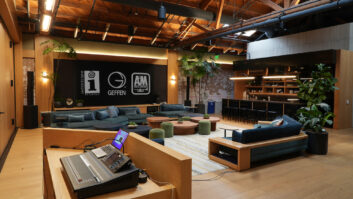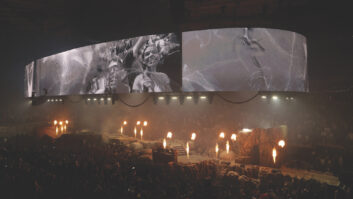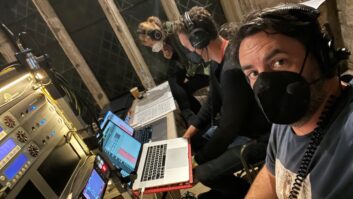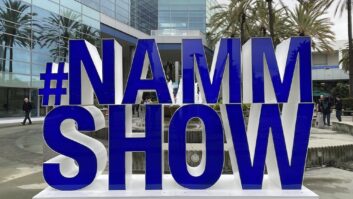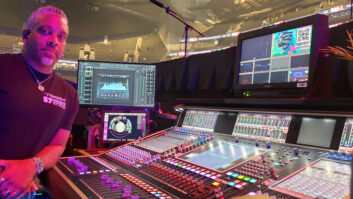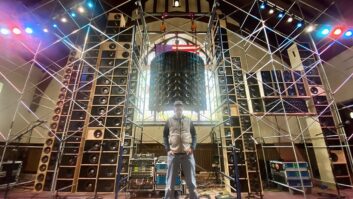More toys than screen space. In his Continuing Adventures In Software, Rich Tozzoli pauses for reflection and wipes a tear of joy from his eye as he beholds the toys and tools that virtually surround him.

I’d like to take this opportunity, both as a journalist and a mixer/ composer, to thank all of the wonderful pro audio software manufacturers. Having come up the chain working in studios before software was even an option, I appreciate what we all have in the comfy confines of our DAWs. It doesn’t go unnoticed the amount of research, development, toil, sweat, stress and struggle that it takes to put out the amazing variety of tools we can produce great music with. So from me, a huge “Thank you.”
If you step back and think about the production end of making music, the times couldn’t be better for creative output. Our workstations serve as a central nerve center where we can record, mix, edit, compose, do sound design, and output any variety of files. You can score to picture with huge orchestral libraries, play mind-boggling pianos in real, world-class concert halls, blaze away through vintage guitar amps, jam with virtual drummers, tweak knobs on vintage or modern synths and warp sound beyond all belief. We have access to racks of amazing reverbs and any number of different EQs. We can control faders from our iPads and plug in full 88-key, weighted keyboard controllers with nothing but a USB cable. Literally, this could all be done on a laptop now. Scary.
The other day, I sat back and took a look at what I was using in a typical session. What really struck me was the variety of different dynamic processors and compressors I had in there. Since I do a lot of TV music, the style and type of cue changes almost weekly. But the one common thread is that I need to push a big sound through small speakers, and for that, compression is my friend.
On my master fader alone, I had the Universal Audio Shadow Hills compressor, followed by the SSL G Bus compressor, followed by the Sonnox Limiter. Each one does just a little, but in combination, when you bypass them all, the difference is staggering.
Then I looked into the actual tracks. On the drum overheads, I had the Universal Audio 1176’s REV A version. On the room mic, I had the Eventide Ominpressor. My favorite room mic is a Beyerdynamic M160, and that pumping through the quirky Omnipressor is stunning. Then, on the kick, I had a Sonnox Inflator for extra ‘click,’ followed by a touch of Universal Audio LA-2. On the snare, I had the Universal Audio EL-7 Fatso Jr, in pump mode.
Moving to the bass, I used a touch of SoundToys Decapitator followed by a Waves dbx 160. On the electric guitars, I had a Universal Audio 1176 AE edition, set with no compression (just for gain and tone) on each of the mics (Sennheiser MD 421 and Royer Labs R-121), as well as a touch of Waves Kramer PIE. On acoustic guitar, I had the Sonnox Dynamics set with a soft knee at a 4:1 ratio, set so it just barely hit the compression stage, as well as a hint of McSDP MC4 to brighten. That’s a lot of different compressors, all with their own sound, style and character. Some I hit hard, some I barely touch, but they all work together.
Now think back just a few years ago. If that above list were all hardware, I’d be in the hole for tens of thousands of dollars, not to mention the physical real estate to host them, the electricity to run them, and the fans to cool them. Instead, I have them available to me in an instant with nothing but the click of a mouse.
Most importantly—and this relates back to my original point of thanking these manufacturers—they sound amazing. I’ve used most of the above-mentioned hardware, and all of these dynamic processors are ridiculously close to the actual units—if not better (depending on the original condition of the units).
So sit back and look at your own setup. Think about how great we have it now, with all this amazing ‘gear’ at our disposal. There’s nobody to blame but you if those mixes don’t rock. And if you’re strolling around the AES show, stop by a software manufacturer and thank them. Drop them some business and let them keep making products that helps make our music better.
